Home » Vacuum Series Kneaders: A Necessity for Pigment Production
Vacuum Series Kneaders: A Necessity for Pigment Production
Kneader
Details of Kneader
- The machine comprises a motor, cover press, main body, mixing chamber and rotor mechanism, gearbox, air control system, tilting machine, heating/cooling system, rubber belt transmission and base, etc.
- The kneader can be made into vacuum, pressure, atmospheric, Normal temperature, high temperature, low temperature, etc.
- The temperature adjustment method of a kneader can be the jacket, halfpipe, far-infrared tile, steam, hot water, heat transfer oil, electric heating, cooling water, chilled water, and other methods.
Application: Paint, Adhesive, Battery, Pharmaceutical industry, Cosmetic
It is mainly composed of five parts: kneading part, machine base part, hydraulic system, transmission system, and electric control system. Among them, vacuum series kneaders are widely used, especially for the mixing and stirring of pigments. Reasonable use of kneaders can greatly improve the production and quality assurance of products.
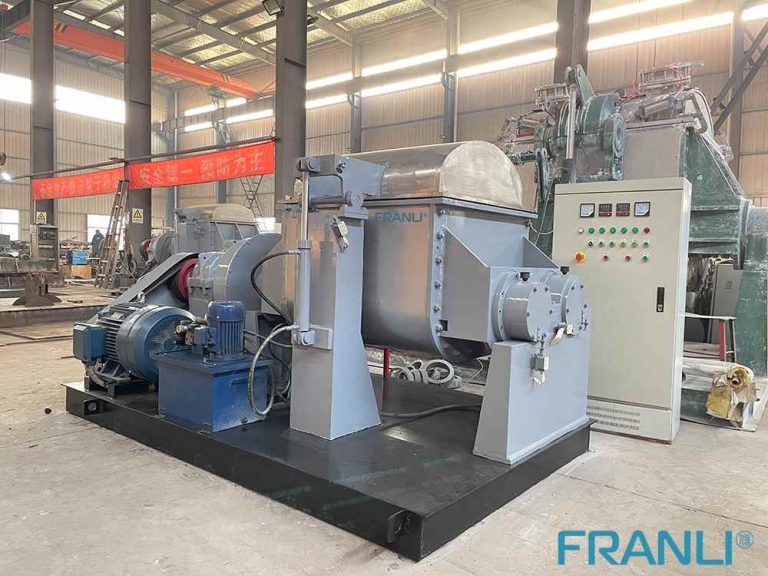
The distance between the centers of the impellers of the vacuum kneader and the gap between the impellers and the tank wall
To produce high-quality pigments, the distance between the center of the vacuum kneader mixer and the tank wall must be guaranteed, which is an important factor affecting the quality of pigments. For organic pigments, a gap of 3~6mm is suitable, too small or too large is not good. If the gap is too small, the material layer on the tank wall will be very thin, and less material will be ground between the stirring paddle and the tank wall every 1-2 weeks of the stirring paddle rotation; The buffering effect of the material, the shearing and grinding force of the material layer are not enough, all of which affect the kneading effect. In addition, if the gap is too large, the material layer on the tank wall will be too thick, which will also affect the heat transfer effect of the machine. The mutual extrusion and shearing of materials between the two stirring paddles are very critical to whether the pigment can meet the technical requirements, so the center distance between the two paddles should not be too large, generally twice the radius of rotation plus 6~15mm.
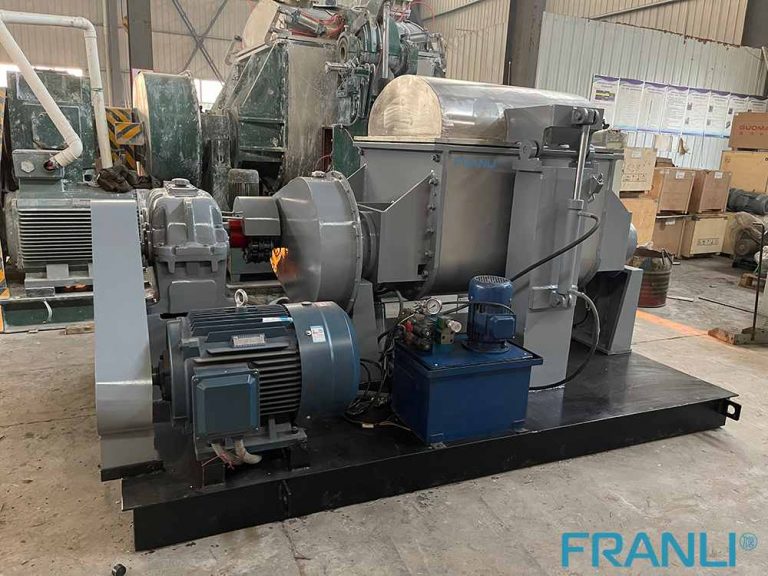
The rotation speed of the two impellers of the vacuum mixer
Generally, the two stirring speeds of the vacuum kneader are different. The speed of the paddle should not be too fast, which requires high power, high structural strength requirements for each component, and an increased transmission mechanism. At the same time, if the rotation speed of the kneader is too fast, it is easy to cause the materials to be thrown up and hit the vacuum kneader, and the work consumed has little effect on the grinding of the pigment, and the efficiency is not high. Generally, the stirring speed of the vacuum kneader should not be too low, otherwise, the kneading time will be prolonged and the daily output will be reduced. When the pigment is kneaded, the speed of the fast shaft of the vacuum kneader is generally 25~35rpm, and the speed of the low-speed shaft is 16~24rpm.
The tank bottom form of the vacuum kneader
The vacuum kneader used for the post-processing of pigments is generally a horizontal biaxial structure. The bottom of the tank is two semicircles. The two stirring paddles are respectively in the two semicircles, the axes are concentric with the semicircles, and a certain gap is kept between the outer diameter of the stirring paddles and the wall of the semicircle. The height of the ridges and the roughness of the inner surface of the trough has a significant effect on the kneading effect of the pigment. The height of the protrusion is generally below the biaxial connection, and the distance is 20-50mm. Too high or too low will seriously affect the kneading effect. In addition, the internal surface of the groove is made into a file shape, and the ridge is made into a sawtooth shape, which is helpful to improve the kneading efficiency and shorten the kneading time.
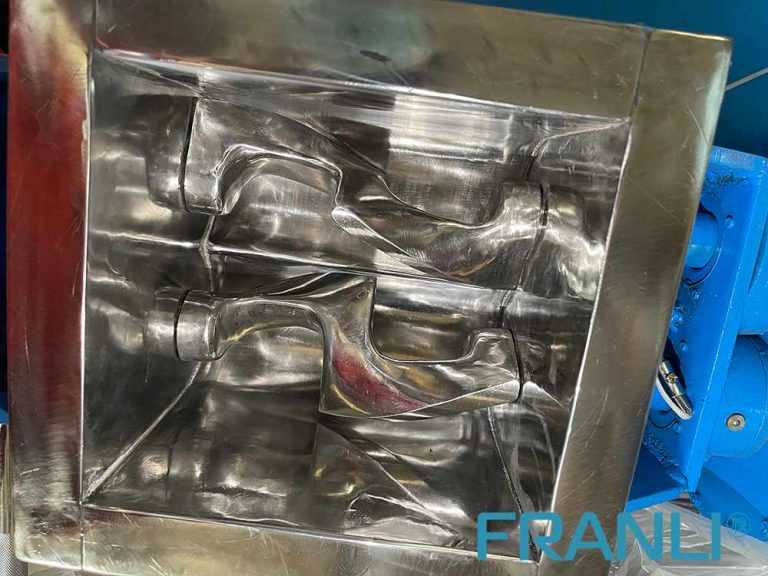
The shape of the stirring paddle of the vacuum kneader
The SIGMA (∑) type is a general-purpose stirring paddle, which is currently the main form of domestic vacuum kneaders. In the production of pigments, special stirring paddles have been developed abroad. It is a twisted long rectangle with anti-impact blades added to it. It is characterized by high strength and low kneading noise. After process adjustment, the effect of ∑-shaped paddles in pigment production can also be satisfactory, but the kneading efficiency is low for a long kneading time.
The length-to-diameter ratio, section size, working surface form, and rotation degree of this type of paddle have a great influence on the kneading effect of the pigment. The length-to-diameter ratio of the stirring paddle used for the production of pigments is generally 2.0~2.4. Due to the large amount of wear in the process of pigmentation using a vacuum kneader, a liner is generally installed on the working surface of the stirring paddle that is squeezed by the material, which can not only protect the paddle and prolong its service life but also prevent the stirring due to wear and tear. When the gap with the tank wall becomes larger, it is adjusted by welding on the liner to maintain the requirements of the product for the equipment.
Welcome to send inquiry to us and let’s make a win win business together !
Guidelines For Kneader
The dispersion kneader is suited for rubber and plastic mastication, as well as the blending of different rubber and plastic components. Small and medium-sized rubber and plastics manufacturers with a wide range of product types and colours, as well as food, dyes, pharmaceuticals, and ceramics, can benefit from the internal mixer.
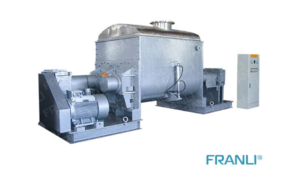
Sigma Kneader: The Solution for Mixing and Kneading
Sigma kneader is a versatile machine that can be used for mixing, kneading, and homogenizing a wide range of materials, including high-viscosity products.
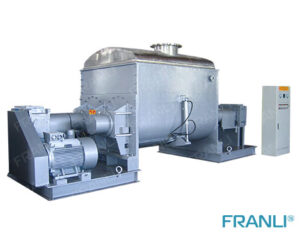
Sigma Mixer: Indispensable Equipment For Manufacturing
Sigma Mixer is a type of mixer that uses a unique mixing principle to achieve an efficient blending of materials. The mixer consists of two blades that rotate in opposite directions, creating a kneading and folding action that ensures thorough mixing. The blades are shaped like the Greek letter Sigma, hence the name Sigma Mixer.

Sigma Blade Mixer: The Mixing Solution
The Sigma Blade Mixer is a robust and reliable mixing machine that uses a unique mixing principle to achieve superior results. It is a type of double-arm kneading mixer that features two blades that rotate in opposite directions.

Vacuum Kneader: A Machine for Your Mixing Needs
The Vacuum Kneader is a type of mixer that utilizes a vacuum chamber to create a homogeneous mix of ingredients. It is designed to knead, mix, and disperse high-viscosity materials under vacuum conditions, resulting in a superior product.

Efficiency and Effectiveness of Dispersion Kneader
The dispersion kneader has complete control over the mixing and blending of the raw materials to create an even mix that allows for better distribution. This device contains a mixing chamber with rotating blades made of high-quality steel.

Vacuum kneader: high efficiency and environmental protection
A vacuum kneader is mainly used for stirring, mixing, and kneading high-viscosity and elastic-plastic materials. The most common fields include high-viscosity sealant, silicone rubber, neutral acid glass glue, chewing gum, bubble gum, aluminum silver paste, silica gel, paper pulp, cellulose, and other materials. It covers food, agrochemical, pharmaceutical, cosmetics, electronic paste, and other industries, and has been sought after by the industry.

